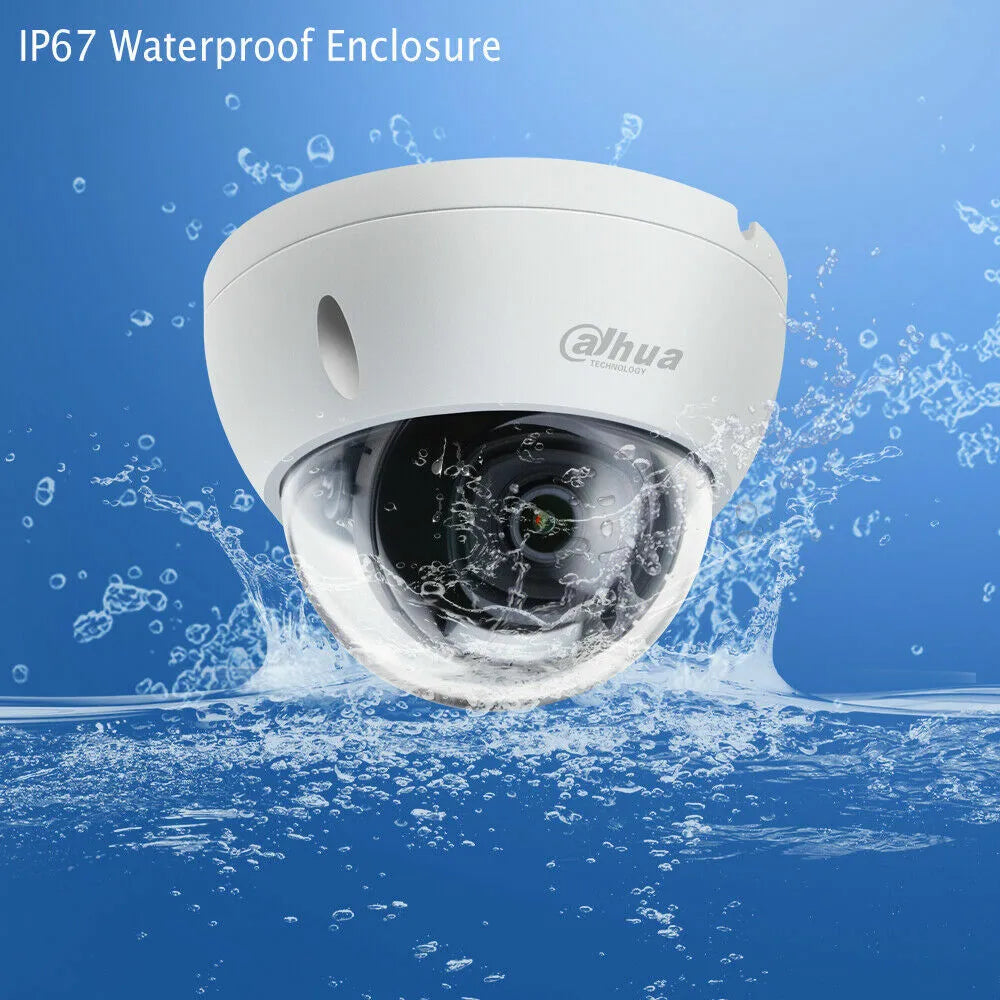Why do you need to water seal your Dahua IP CCTV camera?
Dahua is one of the leading brands of security cameras in the world, offering the latest in CCTV technology and features. Dahua IP cameras use internet protocol (IP) to transmit video data over a network, which makes them more flexible and scalable than traditional analog cameras. However, IP cameras also have more cable connections than analog cameras, which can expose them to water ingress if not properly sealed.
Water ingress is the term used to describe the penetration of water into a device or system. Water ingress can cause serious damage to your Dahua IP CCTV camera, such as:
- Corrosion of metal parts and connectors
- Short circuit of electrical components
- Fogging or condensation of the lens
- Loss of video signal or quality
- Malfunction or failure of the camera
To prevent water ingress, you need to water seal your Dahua IP CCTV camera and its cable connections. Water sealing is the process of applying a protective layer or barrier to prevent water from entering or contacting a device or system. Water sealing can be done in different ways, depending on the type and location of your camera.
How to water seal your Dahua IP CCTV camera?
There are two main types of Dahua IP CCTV cameras: dome cameras and bullet cameras. Dome cameras have a spherical shape that covers the lens and the housing, while bullet cameras have a cylindrical shape that extends from the base to the lens. Each type of camera has different methods of water sealing, which we will explain below.
Dome cameras
Dome cameras are usually installed on ceilings or walls, either indoors or outdoors. They have a single cable connection that goes through the base of the camera. To water seal a dome camera, you need to follow these steps:
1. Run the CAT6 cable to the location where you want to install the camera. The cable should come from the location where your NVR (network video recorder) is located.
2. Connect and install the camera to one end of the cable and connect the other end to the NVR.
3. Make sure the O-ring is in the correct slot on the base of the camera, and it is sealed all the way around, not cockeyed. The O-ring is a rubber ring that creates a tight seal between the base and the dome of the camera.
4. Dry out any moisture inside the camera with a hair dryer or a fan, and replace the silica gel packet inside the camera. The silica gel packet is a small pouch that absorbs moisture and prevents condensation inside the camera.
5. Seal the cable connection near the camera with electrical tape or heat shrink tubing to protect against water ingress.
6. Screw on the dome cover tightly and make sure there are no gaps between the cover and the base.
Bullet cameras
Bullet cameras are usually installed on walls or poles, either indoors or outdoors. They have two cable connections: one for power and one for data. To water seal a bullet camera, you need to follow these steps:
1. Run the CAT6 cable and the power cable to the location where you want to install the camera. The cables should come from the location where your NVR and power supply are located.
2. Connect and install the camera to one end of each cable and connect the other ends to the NVR and power supply.
3. Use a weather seal, cable gland, grommet or coupler to attach each cable to the camera body. These are devices that create a watertight seal around each cable entry point on the camera body.
4. Dry out any moisture inside the camera with a hair dryer or a fan, and replace the silica gel packet inside the camera.
5. Seal any exposed cable connections with electrical tape or heat shrink tubing to protect against water ingress.
Tips and tricks for water sealing your Dahua IP CCTV camera
Here are some additional tips and tricks for water sealing your Dahua IP CCTV camera:
- Use waterproof boxes or enclosures if you want extra protection for your cable connections, especially if you live in a rainy area or experience heavy storms. Make sure the boxes have ventilation holes to prevent overheating and condensation.
- Use silicone sealant or caulk to fill any gaps or cracks around the camera base or mount, to prevent water from seeping in.
- Use a sun shield or a rain cover to protect your camera lens from direct sunlight or raindrops, which can affect the video quality or cause glare.
- Check your camera regularly for signs of water ingress, such as rust, corrosion, fogging, or loss of video. If you notice any of these, you may need to replace the camera or the cable connections.
Conclusion
Water sealing your Dahua IP CCTV camera is an important step to ensure the longevity and performance of your video surveillance system. By following the steps and tips we have provided in this blog post, you can achieve a waterproof installation that will keep your camera safe and secure for years to come.
We hope you found this blog post helpful and informative. If you have any questions or comments, please feel free to leave them below. And if you are looking for high-quality Dahua IP CCTV cameras and accessories, check out our website at www.cctvimporters.com.au. We offer a wide range of products at competitive prices, and we also provide professional installation and support services. Contact us today and let us help you with your security needs!









